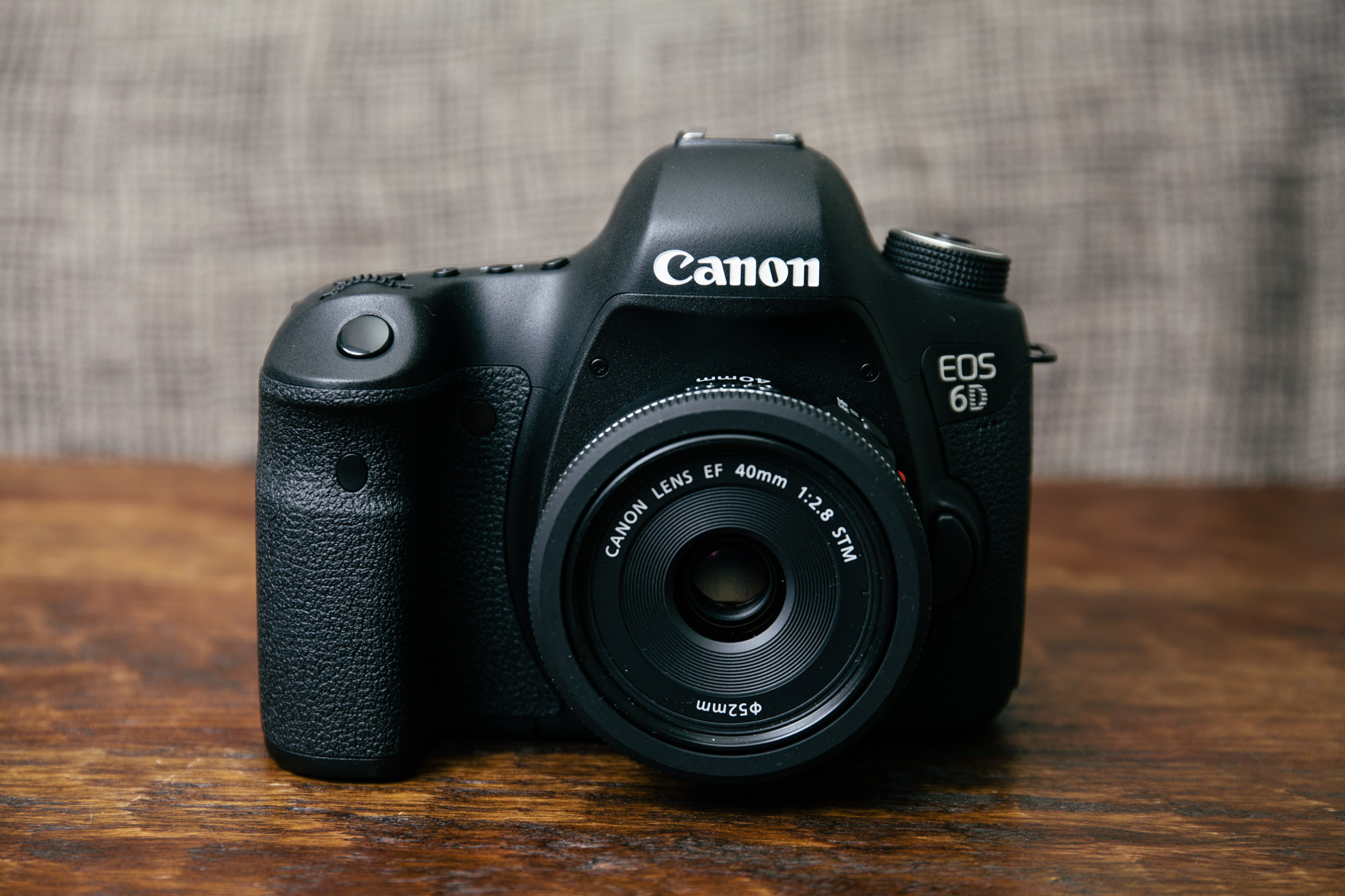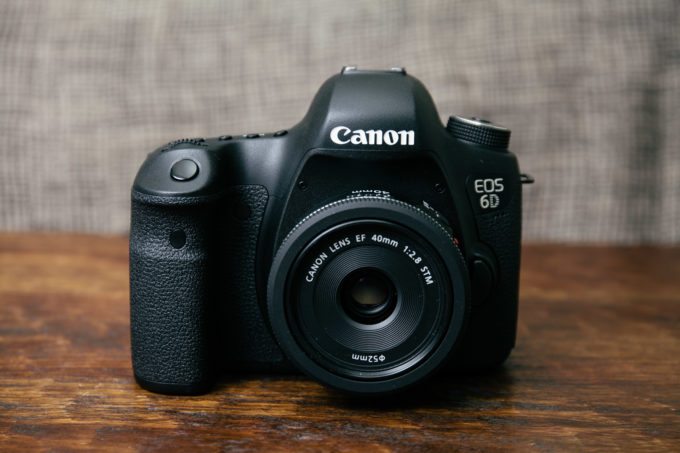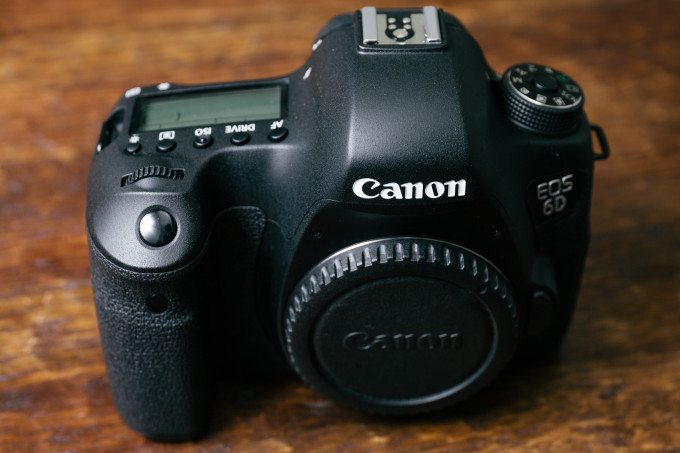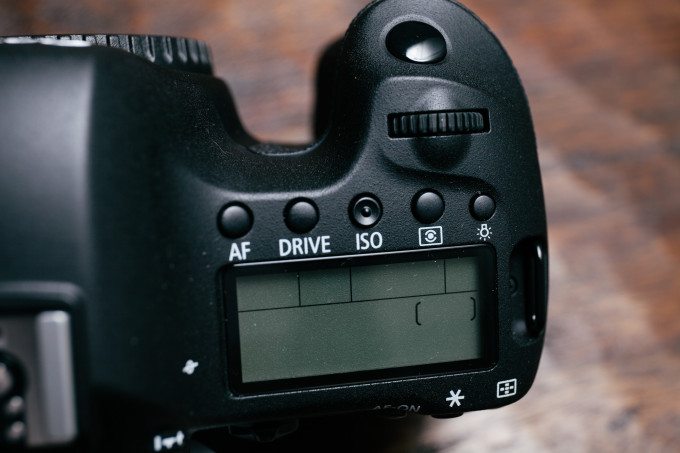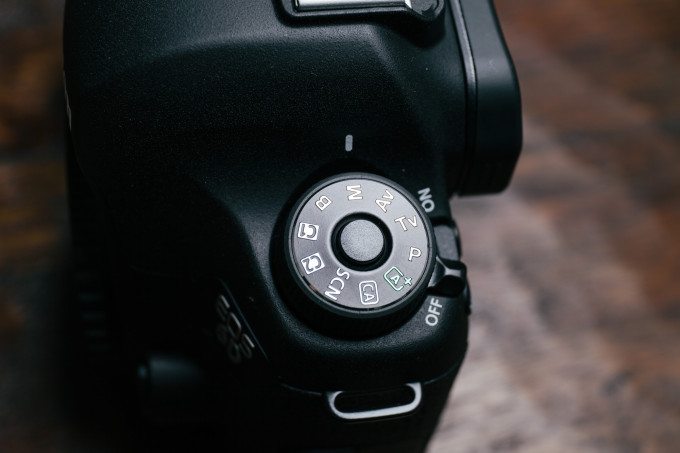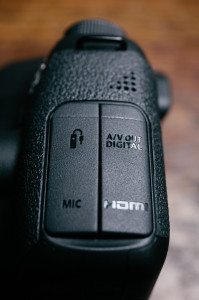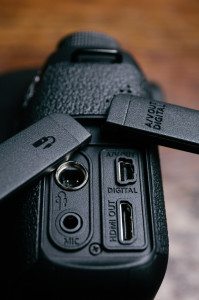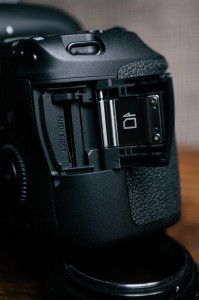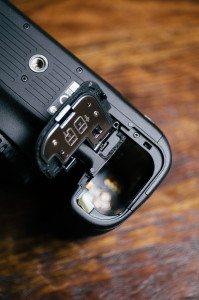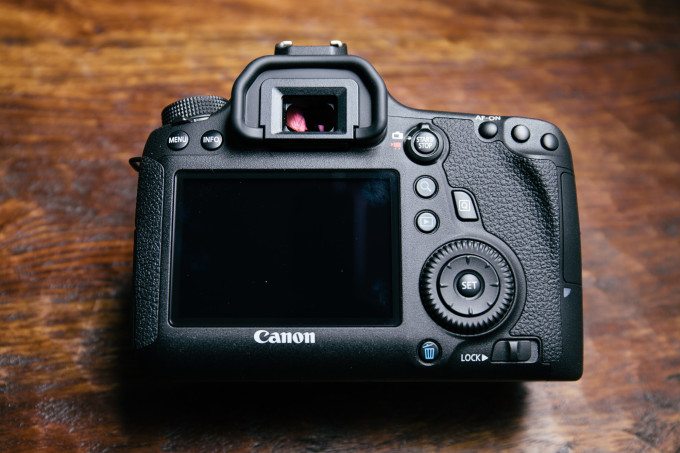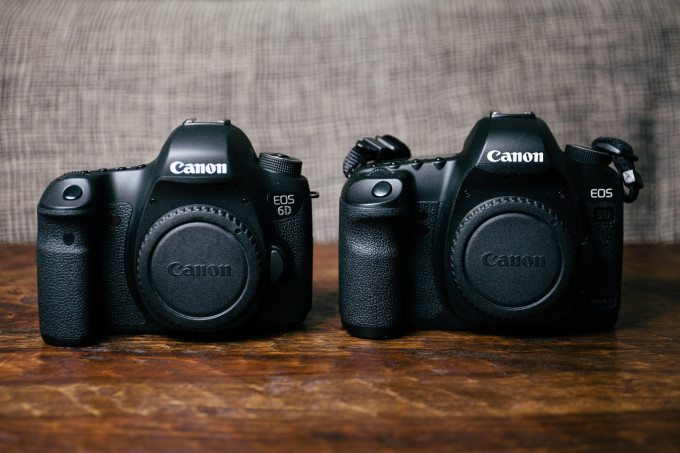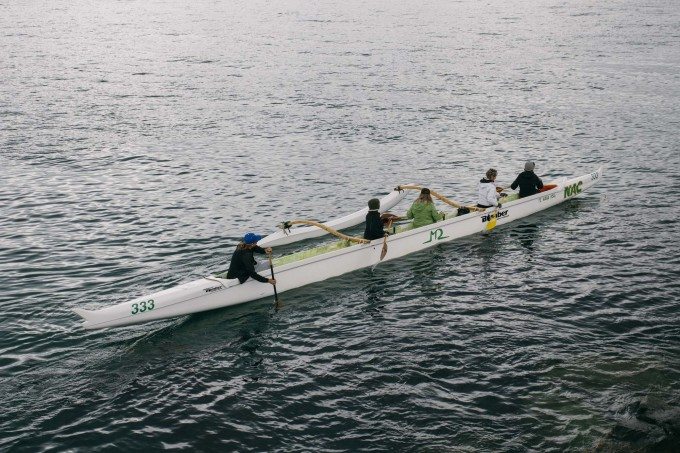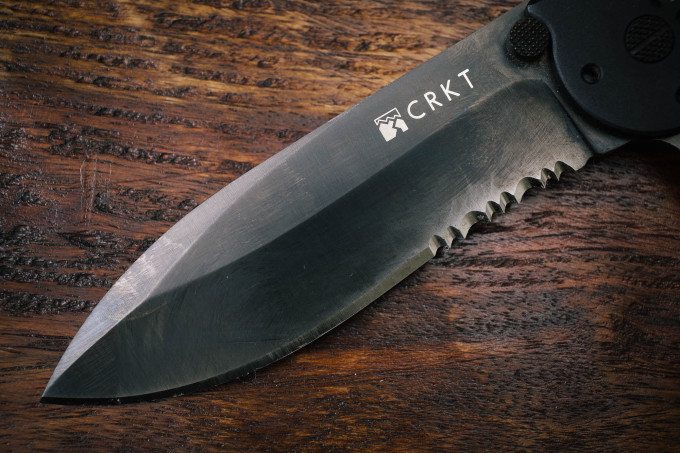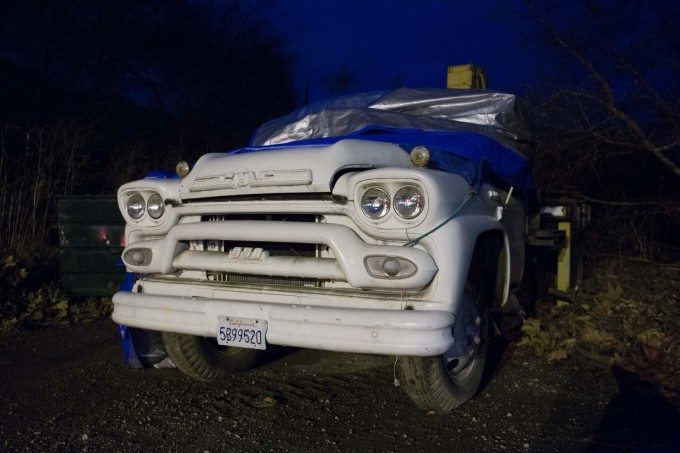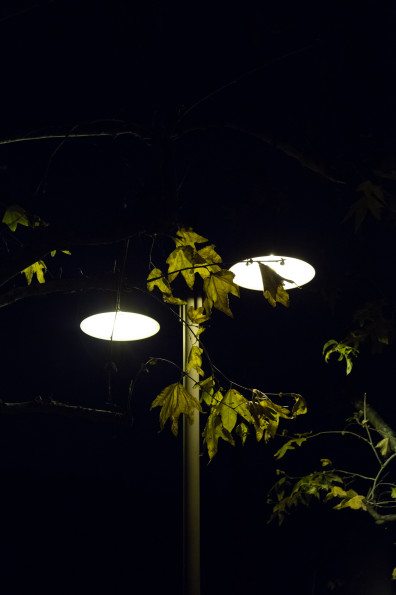Last Updated on 02/25/2013 by Abram Goglanian
Canon’s latest full-frame offering comes in below the 5D MKIII in the lineup, but offers an easier entry point for those looking to upgrade to a full-frame camera. With the exception of the now discontinued 5D MKII body (which one can still buy), the 6D presents itself as the least expensive full-frame body available brand new from Canon. Adorama was kind enough to supply us with a unit for review, and the following is a summary of my experience with Canon’s EOS 6D Full-Frame Body.
Pros and Cons
Pros
– Comfortable size and weight in-hand
– Great High-ISO image quality
– Silent Shutter!! (Sorry, that one just really excites me)
Cons
– Rear panel layout feels strange coming from 5DmkII
– 1/4000 Top Shutter speed & 1/180 Max sync speed
– Does not recognize 3rd party batteries
Gear Used
Canon 580EXII Speedlights (Discontinued: 600EX-RT is it’s replacement)
Pocket Wizard Plus II Triggers (Discontinued: Plus III triggers are the replacement)
Photoflex 45″ Shoot-Thru Umbrellas
Tech Specs
Taken from Adorama’s Product Page
| Type | Digital AF/AE single-lens reflex camera |
| Recording Media | SD card, SDHC card, SDXC memory card* Compatible with Ultra High Speed (UHS-I) memory cards. |
| Image Sensor Size | 35.8mm x 23.9mm (Full-Frame) |
| Compatible Lenses | Canon EF lenses (except EF-S and EF-M lenses) |
| Lens Mount | Canon EF mount |
| Image Sensor Type | CMOS Sensor |
| Pixels | Effective pixels: Approx. 20.2 megapixels |
| Total Pixels | Total pixels: Approx. 20.6 megapixels |
| Aspect Ratio | 3:2 (Horizontal: Vertical) |
| Pixel Unit | 6.55 um square |
| Aspect Ratio | 3:2 (Horizontal: Vertical) |
| Color Filter System | RGB primary color filters |
| Low-pass Filter | Fixed position in front of the CMOS sensor |
| Dust Deletion feature | Self Cleaning Sensor UnitDust Delete Data acquisition and appendingManual cleaning |
| Recording Format | Complies with Design rule for Camera File system 2.0 and EXIF 2.30 |
| Image Type | Still: JPEG, RAW (14-bit, Canon original), RAW+JPEGVideo: MOV (Image data: H.264, Audio: Linear PCM) |
| RAW + JPEG Simultaneous Recording | YesLarge RAW and JPEG images are recorded simultaneously |
| Size | Large: Approx. 20.0 megapixels (5,472 x 3,648)Medium: Approx. 8.9 megapixels (3,648 x 2,432)Small 1: Approx. 5.0 megapixels (2,736 x 1,824)Small 2: Approx. 2.5 megapixels (1920 x 1280)Small 3: Approx. 350,000 pixels (720 x 480)RAW: Approx. 20.0 megapixels (5,472 x 3,648)M RAW: Approx. 11.0 megapixels (4,104 x 2,736)S RAW: Approx. 5.0 megapixels (2,736 x 1,824) |
| File Numbering | Consecutive numbering, auto reset, manual reset |
| Color Space | sRGB, Adobe RGB |
| Picture Style | Auto, Standard, Portrait, Landscape, Neutral, Faithful, Monochrome, User Defined 1-3 |
| Backup Recording | Not Availabled |
| White Balance Settings | Auto, Preset (Daylight, Shade, Cloudy, Tungsten Light, White Fluorescent Light, Flash), Custom (Approx. 2,000° – 10,000°K), Color Temperature (Approx. 2,500° – 10,000°K), White Balance Correction, and White Balance Bracketing |
| Auto White Balance | Auto white balance with the image sensor |
| Color Temperature Compensation | Blue/amber bias: ±9 levelsMagenta/green bias: ±9 levels* Correction based on the current WB mode’s color temperature |
| Color Temperature Info Transmission | Provided |
| Viewfinder Type | Eye-level SLR (with fixed pentaprism) |
| Viewfinder Coverage | Vertical/Horizontal approx. 97% |
| Viewfinder Magnification / Angle | Approx. 0.71x / 33.3 Degree |
| Viewfinder Eyepoint | Approx. 21mm (from eyepiece lens center) |
| Built-in Dioptric Adjustment | -3.0 to +1.0m-1 (diopter) |
| Focusing Screen | Eg-A II provided. Interchangeable with Eg-D and Eg-S. Incompatible with Eg-A. |
| Viewfinder Mirror | Quick-return half mirror (transmission: reflection ratio of 40:60) |
| Viewfinder Information | AF information:AF points and focus confirmationExposure information: Shutter speed, aperture, ISO speed (always displayed), AE lock, exposure level, exposure warningFlash information:Flash ready, flash exposure compensation, high-speed sync, FE lockImage information:Highlight tone priority (D+), maximum burst (2-digit display), card informationBattery checkComposition information: Electronic levelWarning Symbol |
| Depth-of-Field Preview | Enabled with depth-of-field preview button |
| AF Points | 11 points all cross-type AF (f/2.8 at center: Dual Cross Sensor)Center: cross-type at f/5.6; vertical line-sensitive at f/2.8.Upper and lower AF points: vertical line-sensitive AF at f/5.6.Other AF points: Horizontal line-sensitive AF at f/5.6. |
| AF Working Range | Center AF Point: EV -3 to 18 (at 73°F/23°C, ISO 100)Other AF points: EV +0.5 to 18 (at 73°F/23°C, ISO 100) |
| Focusing Modes | Autofocus: One-Shot AF – AI Servo AF – AI Focus AFManual focus |
| AF Point Selection | Automatic selectionManual selection |
| Selected AF Point Display | Displayed or indicated by superimposed display in the viewfinder and on the LCD monitor. |
| AF-assist Beam | EnableDisableIR AF-assist beam only |
| Metering Modes | Max. aperture TTL metering with 63-zone SPC with the following selectable modes:1) Evaluative metering2) Partial metering (center: approx. 8% of viewfinder)3) Spot metering (center: approx. 3.5% of viewfinder)4) Center-weighted average metering |
| Metering Range | EV 1-20 (at 73°F/23°C with EF50mm f/1.4 USM lens, ISO 100) |
| Exposure Control | Creative ZoneProgram AE (Shiftable), Shutter-priority AE, Aperture-priority AE, Manual exposure, Bulb, Custom shooting mode,Basic zoneScene Intelligent Auto (Program AE / non-shiftable), Creative AutoSpecial ScenePortrait, Landscape, Close-up, Sports, Night Portrait, Handheld Night Scene, HDR Backlight Control mode |
| ISO Speed (Recommended Exposure Index) | Auto and Manual setting range of ISO 100-25600 (expansion possible to ISO 50, ISO 51200 and 102400) in 1/3-stop or whole-stop increments) |
| Exposure Compensation | Manual: ±5 stops in 1/3- or 1/2-stop incrementsAEB : ±3 stops in 1/3- or 1/2-stop increments |
| AE Lock | Yes |
| Shutter Type | Vertical-travel, mechanical, focal-plane shutter with all speeds electronically-controlled |
| Shutter Speeds | 1/4000 to 30 sec., X-sync at 1/180 sec. (Total shutter speed range. Available range varies by shooting mode.) |
| Shutter Release | Soft-touch electromagnetic release |
| Shutter Lag Time | (1) During SW-1 ON, time lag between SW-2 ON and start of exposure: approx. 0.060 sec.(2) Time lag between simultaneous SW-1/SW-2 ON and start of exposure: Approx. 0.144 sec.* Time lag with the aperture stopped down by 3.5 stops or less (Excludes AF operation time). |
| Self-timer | 10-sec. or 2-sec. delay |
| Compatible Speedlites | EX-series Speedlites |
| Flash Metering | E-TTL II autoflash (evaluative flash metering and average flash metering) |
| Flash Exposure Compensation | ±2 stops in 1/3- or 1/2-stop increments |
| External Speedlite Control | Provided* Compatible with radio wireless flash photography. |
| FE Lock | Provided |
| Drive Modes | (1) Single shooting(2) Continuous shooting(3) Silent single shooting(4) Silent continuous shooting(5) 10-sec. self-timer/Remote control(6) 2-sec. self-timer |
| Continuous Shooting Speed | Continuous shooting: Max. approx. 4.5 fpsSilent continuous shooting: Max. approx. 3.0 fps |
| Maximum Burst | Based on 8GB memory Card:JPEG Large/Fine: Approx. 73 ShotsRAW: Approx. 14 ShotsRAW+JPEG Large/Fine: 7 ShotsBased on 8GB UHS-I memory card:JPEG Large/Fine: Approx. 1250 ShotsRAW: Approx. 17 ShotsRAW + JPEG Large/Fine: 8 Shots |
| Focusing | (1) Autofocus1. FlexiZone – Single * One-point, contrast AF. Switching to another AF point is possible.2. Face Detection Live mode* Face detection, contrast AF. Face is selectable.2. Face Detection Live mode* Face detection, contrast AF. Face is selectable.3. Quick Mode AF* Phase-difference AF with 11 AF points.(2) Manual Focus 1. Magnify the image by 5x or 10x and focus manually. |
| Metering Modes | Real-time evaluative metering with image sensor.(1) Evaluative metering (315 zones)(2) Partial metering (approx. 11% of Live View screen)(3) Spot metering (approx. 3% of Live View screen)(4) Center-weighted average metering |
| Metering Range | EV 1-20 (at 73°F/23°C with EF 50mm f/1.4 USM lens, ISO 100) |
| Grid Display | Provided (Two-type grid displays) |
| Exposure Simulation | Provided |
| Silent Shooting | Provided (Mode 1 and 2) |
| Video File Format | MOV (Image data: MPEG-4 AVC / H.264)Audio: Linear PCM (Stereo) |
| Video Frame Rates | 1920 x 1080 (Full HD): 30p (29.97) / 24p (23.976) / 25p1280 x 720 (HD): 60p (59.94) / 50p640 x 480 (SD): 30p (29.97) / 25p |
| Video ISO Range | Auto ISO range: ISO 100-12800Manual ISO range: ISO 100-12800 in 1/3- or whole-stop increments (expandable to H: ISO 16000/20000/25600)* If highlight tone priority is set, automatically set within ISO 200 or higher. |
| Video Shooting Time | Based on 8GB Memory card[1920 x 1080]30 fps/25 fps/24 fps:32 min. with IPB compression11 min. with All-I compression[1280 x 720]60 fps/50 fps:37 min. with IPB compression12 min. with All-I compression[640 x 480]30 fps/25 fps:
97 min. with IPB or All-I compression |
| LCD Monitor Type | TFT color, liquid-crystal monitor |
| Monitor Size | 3.0-inches (Screen aspect ratio of 3:2)7.7cm diagonal (6.37cm wide, 4.25cm high) |
| Monitor Dots | Approx: 1,040,000 dots |
| Monitor Coverage | Approx. 100% |
| Brightness Adjustment | Manually adjustable to one of 7 levels |
| Interface Languages | 25 (English, German, French, Dutch, Danish, Portuguese, Finnish, Italian, Norwegian, Swedish, Spanish, Greek, Russian, Polish, Czech, Hungarian, Romanian,Ukraine, Turkish, Arabic, Thai, Simplified/Traditional Chinese, Korean, Japanese) |
| Image Playback Display Format | Single image displayTwo types of single-image full display, two types of shooting informationIndex displayo 4-image index and 9-image indexJump displayJump 1/10/100 images, Shooting Date, Folder, Movies, Stills, or Rating |
| Highlight Alert | With single-image display (Info.) and single-image display, overexposed highlight areas will blink. |
| Histogram | Brightness and RGB can be displayed. |
| USB Terminal | For personal computer communication and direct printing (USB 2.0 Hi-Speed) |
| Audio/Video (Out) Terminal | Audio/Video (Out) Terminal (1) AV stereo OUT terminal: NTSC/PAL selectable(2) mini-HDMI OUT terminal (Type C) |
| Remote Control Terminal | N3-type terminal |
| Battery | One Battery Pack LP-E6With the AC Adapter Kit ACK-E6, AC power is possible.With Battery Grip BG-E13, two battery packs (LP-E6) can be used. Or six AA-sized/LR6 batteries can be used |
| Dimensions (W x H x D) | Approx. 5.7 x 4.4 x 2.8 in./ 144.5 x 110.5 x 71.2mm |
| Weight | Approx. 26.7 oz. / 755g (CIPA standard)Approx. 24.0 oz. / 680g (Body only) |
Ergonomics
The Canon EOS 6D is laid out in a mostly familiar way when compared to most of the DSLR (and film) bodies of the past and present. If you’ve used any of the recent bodies from them you should be able to find your way around the camera fairly easily.
On the top deck of the camera you have the usual suspects for accessing: AF modes, Drive speed (including Silent Shutter mode), ISO settings, and Metering modes. Additionally, you have the front control dial and your shutter button.
On the left hand side of the top deck is the main control dial, which I might add is a locking dial; you have to depress the central button to be able to turn the dial to another mode. Directly underneath is your on/off switch for powering up the camera.
On the side of the camera you will find the ports for connecting a cable remote, USB, HDMI-Out and a Microphone Output jack. These ports are covered by the typical flexible rubber covers that we’ve seen for years on most Canon cameras.
Flipping over to the other side of the camera you will find your SD card slot (Single slot, not a double like you’d find on cameras like the D600 and D7000 from Nikon).
On the bottom of the camera you’ll find the battery chamber right where you’d expect it to be. No surprises here.
Once you’re at the back of the camera, this is where you’ll find the most notable departures from cameras like the 5D MKII and the 7D . Thankfully the main dial is still there (layered underneath the SET button), and while there is something of a joystick functionality with the dial, I didn’t feel it was the same as the one we’ve grown accustomed to on the 5D and other cameras. You’ll also notice that because there are no buttons on the left side of the camera they had to relocate them to the right side. This is mostly fine and one can figure things out reasonably easily, but a couple of the departures were a bit jarring when jumping between the two cameras.
Here you can see the 6D next to my 5DmkII, the sizes are pretty comparable, with the 6D being a bit smaller than the 5D, but not enormously so. I still found the 6D to be plenty comfortable in my hands.
Build Quality
The Canon EOS 6D feels similar in quality to the 5D MKII, though it has a slightly more contoured body. It seems to be nearly the same size as the 60D, with the exception that the 6D is slightly thinner due to not having a pop-up flash housed in the pentaprism. In use I didn’t notice any obvious “weak points” on the camera, which is overall confidence inspiring. The body feels solid in hand and I couldn’t feel any flexing or rattles while using the camera. As far as weather resistance, I didn’t experience any rain during my tests, but I understand that there is at least some level of weather resistance, though I wouldn’t expect it to be as extensive as Canon’s higher end offerings.
Autofocus
Autofocus is one of the most important areas on cameras today, especially DSLRs. If a camera can’t autofocus well, it’s not going to be of much use in the real world. The 6D comes equipped with 11 autofocus points which you can choose. Additionally, the upper and lower points are vertically sensitive, and the other points are horizontally sensitive, which means they should be fairly accurate in most situations. Another important stat is that the central point is sensitive enough to focus accurately in -3EV conditions (basically this means almost-total-darkness). One thing I was pleasantly surprised to discover was that the external focus-points were still fairly accurate in the majority of my tests. I have become rather accustomed to having to rely on only the central focus point of my 5D MKII bodies and using the focus-then-recompose method that so many of us photographers have mastered over the years.
It was a nice change of pace to be able to select a focusing point that was located on my subject and not have to recompose afterwards. I was happy to find that the 6D was able to focus just as quickly and accurately as my 5D MKII bodies. In good light, the 6D had basically no trouble quickly locking on to practically anything that I pointed my lens at, including the outer points, which were just as accurate as the center point. In poor light I still found the center point to be able to lock onto most subjects fairly quickly, while the exterior points did struggle a bit (though this was well within my expectations for the camera) I was still able to lock onto subjects with the outer points, but they were clearly not as fast as the center point. By comparison, both of my 5D MKII bodies struggle with the outer points in anything other than very high contrast scenes in good or poor light, this is a factor that I have come to live with on these cameras. Overall I was very happy with the autofocus accuracy and performance of the 6D, and I felt confident that it would perform well in regular use.
Ease of Use
Have you used a Canon EOS camera in recent years? You have? Well, then you pretty much know how to operate this camera.
Ergonomically speaking, I found it to be comfortable in my hands, which are reasonably large I might add, and it was easy to operate the camera for the most part. I say “for the most part” for a specific reason actually: the 6D lacks the all-too-familiar multi-directional joystick found on many of Canon’s DSLR camera bodies. It wasn’t until it was missing that I truly realized just how often I used that little toggle. Not having it available meant changing my focus point wasn’t as seamless as it is on my 5D Mk II bodies, so I had to keep taking the camera away from my face to look at the buttons to be able to change the AF point.
I realize this may sound trivial to many of you, but for me, I value a seamless shooting experience, I want the camera to be “out of my way” so to speak, if I’m constantly having to think about which buttons I need to be pressing I find that it takes away from my concentration while shooting. The only other thing that sort of bothered me was image review. I am used to pressing the buttons on the top right corner of the camera body to zoom in on my photos and check focus. While those buttons are still present on the 6D, they do not zoom while in image review, and this drove me a little crazy because I kept pressing them and exiting image review. Again, a small and seemingly insignificant issue for many, and surely one that can be adapted to. It just happened to be something that kept happening throughout my whole time with the camera.
The 6D comes built-in with both WiFi and GPS technologies which on paper sound really cool and potentially useful. However I found them both to be rather gimmicky in actual usage (Chris, on the other hand, found them quite cool!). The GPS constantly had trouble locating me (when even my iPhone had no problem) and I’m convinced that all that pinging to satellites can’t be good for battery-life. The WiFi functionality did take a couple tries to get connected to my iOS devices, but it did eventually work as described. However I question the usefulness of this feature other than a sort of pseudo-wireless tether. If you’re viewing on an iPhone, it’s hardly larger than the back screen on the camera, an iPad is slightly more useful in this regard. Now, I realize that it can be handy if one cannot be behind the camera or if it is in a remote location. Sure, it’s nice to be able to see the framing before you trigger the camera, but what I would have REALLY liked to have seen was the ability for either the iPhone or the iPad to become a wireless monitor for video recording. Now THAT would have been handy and a heck of a useful feature to add to the WiFi abilities of this camera.
Moving on, the menus within the camera are largely similar to most of the Canon bodies released in recent years, it took no time at all to find my way around them, thankfully all of them were very clear to me. Nothing to complain about here. Overall, the 6D is very easy to use, minor annoyances aside, and I had no problem shooting the camera alongside my 5D MKII.
Metering
Accurate metering can make or break your shooting experience if the camera in question does not properly meter a scene with repeatable precision. In my tests I found that the 6D was consistently reading a scene precisely the same as my 5D MK II, which itself meters a scene with the same accuracy as my trusty Sekonic light meter (I use the L-558R which is no longer available, the L-758DR was its replacement). So, all of this is to say that the 6D does a fine job with metering scenes of various EV ratings and leaves little doubt in my mind that it will prove to be a plenty accurate camera.
Image Quality
Ah, the juicy bits. The 6D is blessed with a full-frame sensor which contains 20 million pixels and ISO capabilities ranging from 50 up to 102,400 and…Wait a second, these are just numbers right? How does this actually translate into the real world? Well if you keep track of numbers you’ll notice that the 6D has slightly less megapixels in comparison to the 5D MKII and MKIII (21.1 and 22.3MP respectively) but it is still more than sufficient to produce high quality images and truly excellent prints.
I found that the sensor rendered right on par with my 5D MKII up to about ISO 800/1600, at which point the 6D would deliver cleaner results through the rest of the selectable ISO range. Suffice it to say, if still photos are your primary concern, then the 6D is an excellent camera for this purpose. I did not have a chance to use the 6D on any video productions, just a couple of clips, but in my opinion (which is shared by many if you do a Google search on this camera), the 6D is not really aimed at the video market, at least not as much as the 5D MKIII is. There are indeed definite issues with moire patterns showing up in the footage, and there is curiously no headphone monitoring jack on the camera which is a bummer. By comparison, many of us have adapted to using the 5D MKII for video work for several years now which does have some moire issues that we have figured out how to live with or work around. The 6D shows moire which is noticeable, but not much worse over the 5D MKII. The 5D MKIII is very clearly the better camera for video work in the end. Here are some sample images for you to look through taken with various lenses from Canon.
High-ISO Results
In shooting these examples, I had the camera set to 6400 ISO, additionally, I was using the 24-70mm f4L IS for these shots and I still got perfectly sharp, perfectly usable images even at such a high ISO. I personally have a habit to convert to black and white when I approach or surpass 3200 ISO, but even in color the image was not ruined by noise. As a comparison, my 5D MKII is pretty usable up to 3200, and 6400 in a pinch. It’s nice to be able to go up to 6400 pretty confidently with the 6D, and further if it’s an emergency. Overall I found the High-ISO quality to be really very pleasing, and I would feel very comfortable shooting in dark scenarios with a fast lens like the EF 35mm f1.4L.
Raw File Versatility
The 6D RAW files are able to be pushed and pulled just as much as any other EOS camera to-date. Being a passionate film shooter, it is still my opinion that most DSLR cameras still cannot match the exposure latitude of a good quality film stock. Some cameras are getting close, such as RED’s truly impressive Dragon sensor, but most DSLR cameras cannot quite match this level…yet.
That being said, I was plenty happy with how much information you could retain in the highlights and shadows when it came time to process images. Personally, I work with Adobe’s Lightroom 4 which I find to be one of the best and most versatile RAW image processing platforms. I have had good success with Capture One in the past, but I prefer the all-in-one solution of Lightroom.
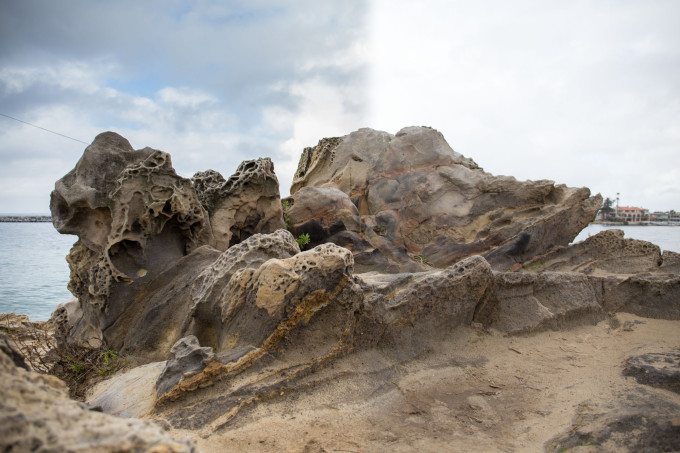
Conclusions
In the end I found very little that I absolutely didn’t like about the 6D. While there are definitely a few things that concern me, I didn’t feel that any one particular issue that I had with the camera would be an absolute deal-breaker if I wanted to purchase it. I know other reviewers and photographers have made a big stink about the camera being completely useless for strobist work due to being limited to 1/180 for a max sync speed, and while I do agree it would have been nice to see at least 1/200, preferably 1/250, the reality is that it can indeed sync at 1/180th with wireless flashes. For example, the 5D MKII is supposed to be able to sync with flashes at 1/200, but with wireless flashes (such as using PocketWizards) I am only able to reliably sync at 1/160, so when you look at it that way, the 6D does a better job than the 5D MKII. The other issue with a max shutter speed of 1/4000, I can agree that maybe for sports shooters who may actually use 1/8000 that is a let-down, but I am almost certain that most sports shooters don’t even have the 6D on their radars. For the rest of us, in all but the most extreme scenarios 1/4000 is more than adequate to use a large aperture in bright daylight conditions. Otherwise there’s always ND filters available.
The one issue that I had that does actually bother me was the fact that the 6D did not work with any of my third-party LP-E6 batteries, where my 5DmkII bodies can read them just fine. It’s more of an annoyance because that means I’d have to go and buy all official Canon batteries rather than saving a bit of money with third-party batteries (which to this day have yet to let me down).
I’m sure this sounds silly, but honestly my favorite new feature from this camera is the Silent Shutter mode. It makes the camera really very quiet when shooting in areas with even the slightest ambient noise. This is a huge blessing for discreet or street photography as the camera was just far more stealthy and not so “you-know-I-just-took-your-picture-because-my-camera-is-as-loud-as-its-name”.
All-in-all, I actually did really like the 6D. I thought it handled well, had really quite good image quality and impressive low-light focusing abilities. There’s certainly more I liked about it than didn’t and I think it’s a worthy consideration for any Canon shooters looking to go full-frame.
Please Support The Phoblographer
We love to bring you guys the latest and greatest news and gear related stuff. However, we can’t keep doing that unless we have your continued support. If you would like to purchase any of the items mentioned, please do so by clicking our links first and then purchasing the items as we then get a small portion of the sale to help run the website.


